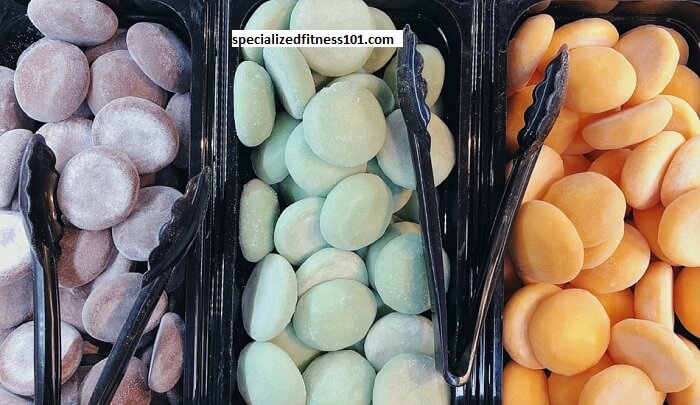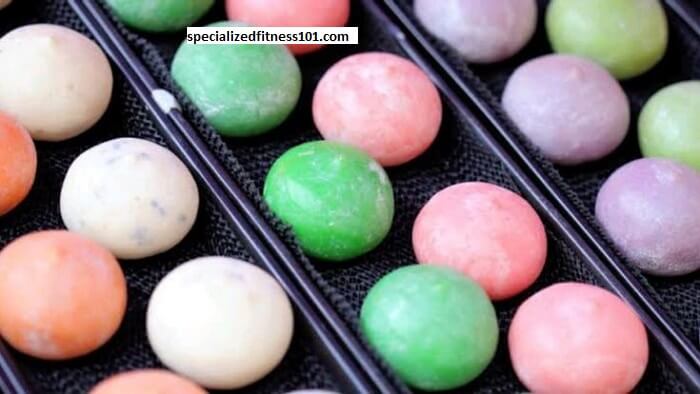Mochi Health: The Emergence of a New Nutrition Powerhouse:
Mochi Health recently burst out from its limited, traditional niche status as a Japanese sweet into popularity as a new food form to be followed in tune with modern trends in healthy food. Essentially, the dough is prepared using mainly glutinous rice and features a chewy texture with the capability for absorption of numerous flavor profiles, thereby being more relished both as desserts and savory preparations. However, goes beyond the taste; it is recognized for its health benefits, nutritional value, and versatility in accommodating most dietary preferences. This paper will look into the origins of mochi, its nutritional profile, health benefits, and the creative integration of mochi into the modern diet.

Origins of Mochi:
Mochi is traced to be more than a thousand years old in Japan. Typically, glutinous rice should be steamed first and then pounded into a sticky smooth paste. In Japan, this is an act that has been ritualized and is often performed at New Year when (mo-chi) is prepared for family reunions and other festivities.
While is probably the most popular rice-based treat in Japanese culture, there are similar rice-based treats across Asian cuisines, including Korean “tteok” and Chinese “niangao.” Today has become a globally enjoyed treat, adapted to local tastes and dietary needs.
Nutritional Profile of Mochi:
Glutinous rice, mochi’s main ingredient, makes up a big chunk of its nutritional profile. Here’s a breakdown of the key components:
1. Calories and Carbohydrates
Mochi is a relatively high-calorie food because it mainly consists of carbohydrates. An unadulterated serving size of 44 grams amounts to about 96 calories and 22 grams of carbohydrates. For an individual, the amount may appear to be reasonably high at first glance. But such carbohydrates also make available ready energy. Consequently, can often be quite in demand for athletes and those with significant activities.
2. Protein
Mochi has a very low protein content compared to other food sources, which is about 1.5 grams per serving. However, when it is combined with protein-rich fillings such as red bean paste, nuts, or even savory ingredients, it can be part of a more balanced meal.
3. Vitamins and Minerals
Mochi contains tiny amounts of essential vitamins and minerals including B vitamins, iron, and calcium. The addition of matcha, fruits, or nuts can elevate the nutritional value and, therefore, provide additional health benefits.
4. Gluten-Free Option
One of the best advantages is that it is gluten-free. For anyone with gluten sensitivities or celiac disease, provides an excellent source. This is a healthy alternative option. Be very careful when choosing commercially made: check the labels to avoid products that have cross-contaminated.

Health Benefits:
Mochi offers numerous health benefits making it a perfect addition to any healthy diet:
1. Energy Boost
Its high carbohydrate content would make it ideal for the need of being a quick energy source that athletes as well as any other person who requires the need for pre- or post-workout boost would fancy the most. Its chewy texture also satiates its consumer, suppressing appetite in the process.
2. Low in Fat
Mochi inherently is low-fat, hence a good dietary choice for people on low-fat diets. If one chooses healthier fillings and toppings, like fruits or yogurt, then fits into many diets without consuming too much fat.
3. Digestive Health
Improved digestibility is another benefit where, especially when mixed with other whole grain ingredients or incorporated with fiber-rich fillings, contains plenty of fiber content.
It is essential for healthy bowel movements and helps prevent constipation.
Given its easy adaptation, it can fit quite easily into a vegan or vegetarian diet as it allows fillings of every type, from fruit, and sweet ice cream, to vegetables and meat, which suits all manner of diets.
5. Cultural and Psychological Benefits
Eating can also bring a cultural and psychological benefit. Traditionally, enjoying traditional food connects many people to their heritage and is an expression of comfort. Mochi-making and sharing further encourage mindfulness and wellness.
Modern Diet:
As mochi is becoming trendy, creative ways of preparing it and adding it to meals and snacks are invented by both chefs and home cooks. Some examples include:
1. Mochi Ice Cream
Mochi ice cream is probably one of the most popular variations of the original. The combination of a scoop of ice cream covered in a layer of provides the chewy texture and the creamy goodness of ice cream. Ice cream comes in different flavors and has become a favorite dessert worldwide.
2. Savory Mochi Dishes
Mochi can be turned into savory versions such as pizza or pancakes. They normally pan-fry or bake them to attain a crunchy outside and chewy inside. It is topped with cheese, vegetables, and sauces, which gives these dishes a twist on traditional favorites.
3. Mochi Snacks
Mochi is increasingly being used as a snack base. Firms produce chips, baked or fried. It’s an easy crunchy alternative to chips; such snacks often have numerous flavors and can cater to consumers who seek gluten-free foods.
4. Smoothie Bowls and Acai Bowls
Another chewy topping is to crush or chop pieces over smoothie bowls or even acai bowls. What this does is not just add texture to the finished dish but also bring much fun to these healthy bowls.
5. Mochi in Baking
The mochi flour is one type that is made by ground glutinous rice. They can bake it to give you the gluten-free type of foods. Recipes about muffins, pancakes, or even bread are trending these days since many crave healthier dessert choices.

Recommendations and Restraints:
Even though is good for health and taste alike, it should be indulged in moderation. Over-consumption can immediately give a person unwanted overweight figures. In addition to that, people with diet restrictions have to stay extra vigilant about the things inside mocsinceinc, some fillers would be allergens as well.
When using mochi in food, consider filling it with nutrient-dense ingredients. For instance, you may fill it with fruits, nuts, or legumes to enhance the nutritional benefits and provide a more satiating experience while eating.

